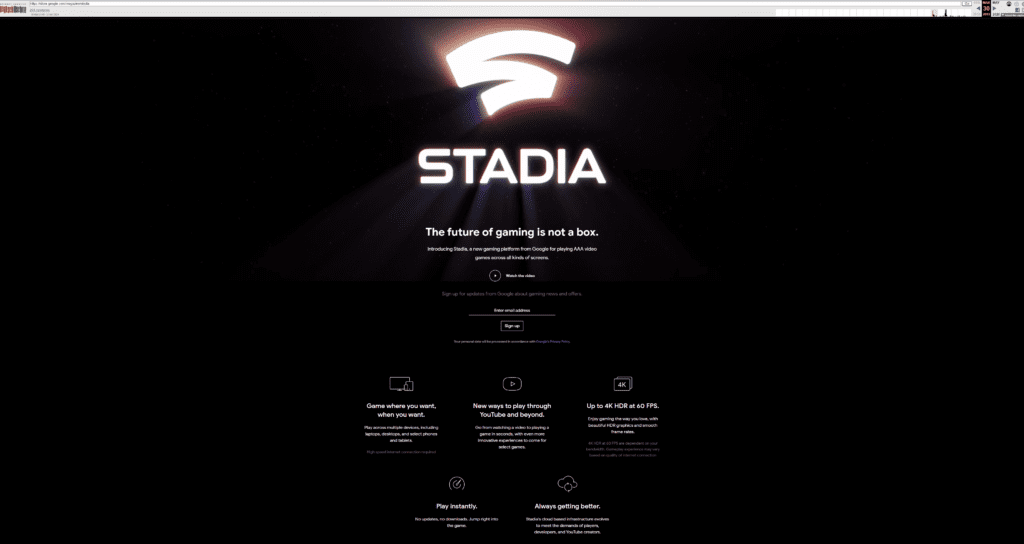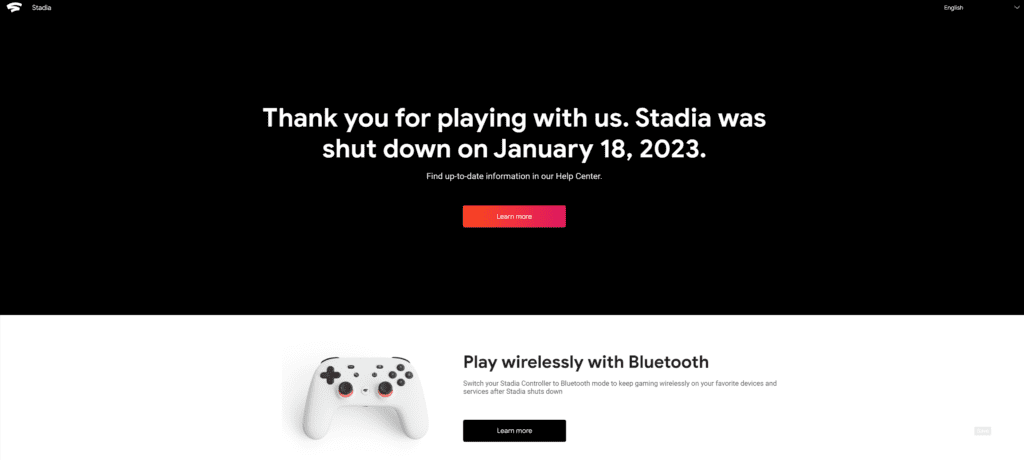Table of Contents

“Stadia had no market share cuz stadia had no games” — this is the response from Reddit user u/psychoticinsane to a post titled, “Why did Google Stadia fail?’ ‘ on the subreddit r/Stadia.
But is that the only reason why this modern-day Icarus of cloud gaming fell to its fiery doom (with much less wax, and many more server shutdowns)?
In the ever-growing expanse of digital gaming, it is widely accepted that battles are won often and largely by those who have the latest and greatest hardware. This notion has been a governing philosophy since the advent of ‘Spacewar!’, the first computer game to have graced the face of our planet, in 1962.
But in March 2019, came the promise of a new seismic shift that would leave these lands altered beyond recognition. With the promise of gameplay at up to 4K resolution at 60 frames per second, Google Stadia sought to democratise the accessibility of high-end gaming experiences, with a marginal investment on the user’s end
The Blueprint of Ambition: First flight for ‘Project Stream’

Before a full release, the precursor to Stadia — ‘Project Stream’ — was meant to provide gamers a live demonstration of its wings. Testing the waters by allowing users to play ‘Assassin’s Creed: Odyssey’ straight from their Chrome web browsers, this closed beta from October 2018 demonstrated the feasibility of a high- fidelity, streamed gaming experience, while entirely avoiding the pitfalls of input lag and latency by betting on a robust internet connection.
The initial response to Project Stream was largely positive, with gaming industry Titan Mark Long stating quite eloquently, “Culturally, they were kind of apologetic about what they didn’t know about the industry. But after I got into the beta access and played with it, I thought it was a f**king amazing product.” However, many beta testers initially reported frequent stutters and spiking input latency. Even though this was a limited crowd amongst a larger base of testers, it is reasonable to deduce that it was a symptom of a larger problem.
Forecast : Uncharted waters and cloudy skies
With a largely positive response from the closed beta, Stadia was now ready to soar into the hands of the consumer base in November of 2019. With an initial arsenal of 22 titles available to users upon launch, Stadia took off into a sky full of stars. And skeptics.
But against the armada of gaming experiences, presented by Sony’s Playstation Now and Xbox’s Game Pass boasting over 800 and hundreds of titles respectively, Stadia fell abysmally short of its major market competitors.

Alongside dropping market shares from 10-15% in 2021 to 0-5% in 2022, heralded by players constantly reporting concerns about latency, owing to varying qualities of internet connections amongst its user base and a sluggishly expanding library compared to its competitors, Google’s next move at attempting a stalemate was widely questioned by many.
An in-house game development studio, geared to release titles exclusive to Stadia, was paired with the Stadia Controller, an innovative piece of hardware designed to connect directly to Google’s servers via Wi-Fi to minimize latency. This controller was meant to embody Stadia’s ambition to redefine gaming interaction. However, soon after its launch, it became a metaphor for Stadia’s challenges — emblematic of the high financial entry barrier for new users and the complexities of marrying high-end technology with a seamless user experience.

The cherry on top, or the lack thereof, was the ambitious pricing model, as reported by the early adopters. To start with, Stadia faltered on its promises of a 4k paradise at 60 frames per second by limiting heaven to a 1080p resolution. Users, alongside having no ownership of games, would have to pay a $10 subscription fee for the Stadia Pro plan to finally reach the promised Neverland.
This was like asking for a sunshine tax in a land, marked exclusively with clouds.
Terra Firma: A swift descent and a swifter demise

The closure of Stadia’s in-house game development studios in early 2021, announced by Phil Harrison, marked a significant pivot. It signalled the first fires on Stadia’s wings, which later lowered it to its grave in January of 2023. However, at the time of shutdown, the writing had been on the wall for a while. With Logitech entirely ignoring Stadia, amongst its list of Cloud gaming services at the time, users say it was evident that Stadia had been brought to life on borrowed time.
After the initial fog of its novelty dissipated, it was clear as day that Stadia was ill-equipped to compete with titans of the industry like Microsoft’s Xbox Game Pass and Sony’s Playstation Now. Even after gaining contractual backing from Ubisoft, with Stadia users having access to Ubisoft+ titles as well, Stadia couldn’t quite recover from its inherent troubles of the pitfalls ingrained within streaming technology.

This tale of Stadia, though not culminating in the utopia amongst the clouds that it set its sights upon, provided the entirety of the gaming industry if not all the technological landscape, with valuable insight. The requirement for robust infrastructure, an expansive array of titles and a reasonable pricing model are all lessons for new players in the cloud gaming space.
As the industry continues to traverse the minefield of cloud gaming, the untimely demise of Google Stadia serves as a testament to the notion that even in descent, there is wisdom to be gained — a true modern-day retelling of Icarus’s timeless tale.
Glossary
Word: Latency
Sentence within the article: Alongside dropping market shares from 10-15% in 2021 to 0-5% in 2022, heralded by players constantly reporting concerns about latency, owing to varying qualities of internet connections amongst its user base and a sluggishly expanding library compared to its competitors, Google’s next move at attempting a stalemate was widely questioned by many.
Meaning: The delay before a transfer of data begins following an instruction for its transfer.